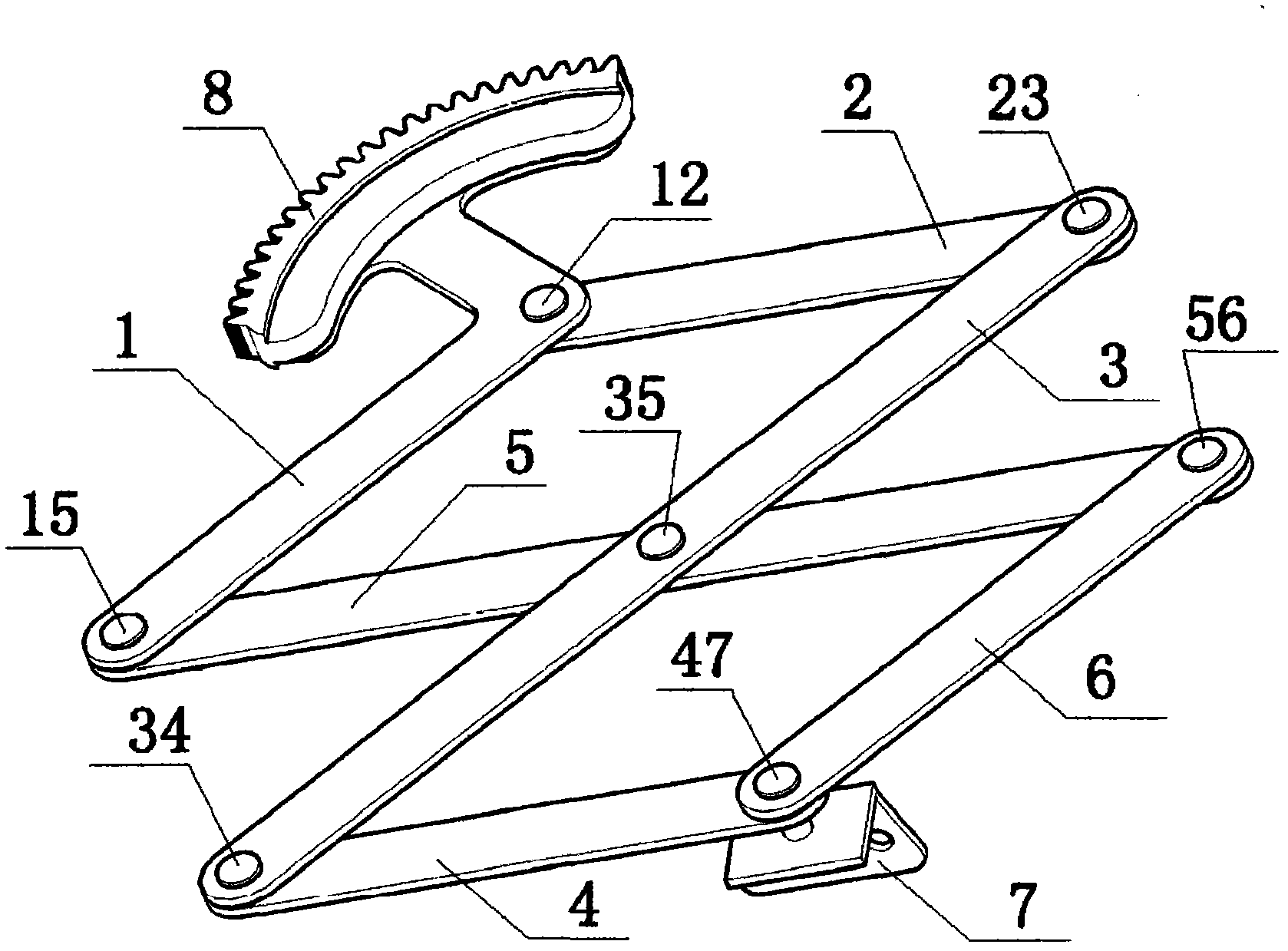Connecting-rod opening and closing mechanism used for casement doors and windows and suspended sash windows
A technology for opening and closing mechanism and swinging doors and windows, which is applied in the direction of wing leaf operating mechanism, door/window accessories, wing leaf opener, etc. and other problems, to achieve the effect of fast opening and closing speed, large opening and closing force, and stable opening and closing speed
- Summary
- Abstract
- Description
- Claims
- Application Information
AI Technical Summary
Problems solved by technology
Method used
Image
Examples
specific Embodiment approach 1
[0024] Specific implementation mode one: refer to figure 1 , the specific embodiment adopts the following technical scheme: it includes active rod 1, fixed rod 2, auxiliary rod 3, and push rod 4, and four connecting rods of active rod 1, fixed rod 2, auxiliary rod 3, and push rod 4 are sequentially hinged on the They are parallelograms together, the fixed rod 2 is fixed on the door and window frame 91, the active rod 1 is provided with a kinematic pair 8, the end of the push rod 4 is equipped with a connector 7, and the connector 7 is fixedly connected with the door and window sash 92, the first hinge point 12. The second hinge point 23 and the hinge shaft center 16 are on the same straight line, the distance between the first hinge point 12 and the hinge shaft center 16, the distance between the first hinge point 12 and the third hinge point 14 , the distances between the third hinge point 14 and the fourth hinge point 47 are equal.
[0025] The principle of the present inve...
specific Embodiment approach 2
[0032] Specific implementation mode two: refer to figure 2 The difference between this specific embodiment and the first specific embodiment is that: the middle part of the active rod 1 and the auxiliary rod 3 is provided with a first connecting rod 5 parallel to the fixed rod 2 and the push rod 4, and the first connecting rod 5 The hinge points of the rod 5 , the active rod 1 and the auxiliary rod 3 are the sixth hinge point 15 and the seventh hinge point 35 respectively, and other components and connections are the same as those in the first embodiment.
[0033] In this specific embodiment, the stability of the connecting rod can be increased by adopting this method.
[0034] refer to Figure 5 , this specific embodiment uses a motor to provide power, and after the gear transmission mechanism shifts, the power is transmitted to the kinematic pair 8, and the kinematic pair 8 pushes the active rod 1 to rotate around the first hinge point 12, and then pushes the window sash t...
specific Embodiment approach 3
[0035] Specific implementation mode three: refer to image 3 The difference between this specific embodiment and the second specific embodiment is that: the first connecting rod 5 is extended, and the distance between the sixth hinge point 15 and the eighth hinge point 56 at both ends is the same as that between the first hinge point 12 and the second hinge point. The distance between the center of the hinge shaft 16 is equal, and the second connecting rod 6 is added at the eighth hinge point 56 and the fourth hinge point 47, and the hinge of the active rod 1 and the push rod 4 is released at the same time, and the active rod 1 and the push rod are shortened. The length of 4, other compositions and connections are the same as in the second embodiment.
[0036] This specific embodiment aims to form a compound hinge. By using this method, the length of the connecting rod after contraction can be reduced, and the opening and closing moment can be reduced.
[0037] refer to Ima...
PUM
 Login to View More
Login to View More Abstract
Description
Claims
Application Information
 Login to View More
Login to View More - R&D
- Intellectual Property
- Life Sciences
- Materials
- Tech Scout
- Unparalleled Data Quality
- Higher Quality Content
- 60% Fewer Hallucinations
Browse by: Latest US Patents, China's latest patents, Technical Efficacy Thesaurus, Application Domain, Technology Topic, Popular Technical Reports.
© 2025 PatSnap. All rights reserved.Legal|Privacy policy|Modern Slavery Act Transparency Statement|Sitemap|About US| Contact US: help@patsnap.com



